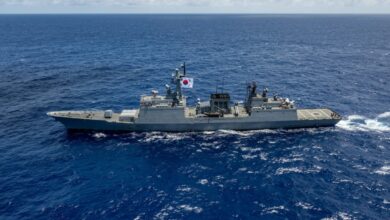BAE, Skunk Works Showcase Drone-Amphibious Vehicle Interoperability for US Marines
BAE Systems and Lockheed Martin segment Skunk Works have tested coordination between aerial drones and an amphibious vessel for the US Marine Marine Corps.
During the trials, Lockheed-built Stalker and Indago small unmanned aerial systems were operated with BAE Systems’ Amphibious Combat Vehicle Command, Control, Communication and Computers/Uncrewed Aerial Systems (ACV C4/UAS) variant.
Alongside the companies, technology suppliers tried out the Stalker and Indago as part of contractor verification tests.
The demonstration concluded with the drones performing according to requirements.
Supporting Expeditionary Needs
According to BAE Systems, the test proved that the approach can support long-endurance reconnaissance operations aboard amphibious combat vehicles in the future.
“We’re focused on giving Marines an advanced technology solution to meet their reconnaissance requirements,” BAE Systems ACV Design and Development Program Manager Mark Brinkman said.
“That’s why we’re teamed with companies like Lockheed Martin — to provide Marines with the best possible capabilities for their expeditionary needs.”

‘Greater Mission Flexibility’
In the next phase, the US Marine Corps will conduct its own assessment to validate the ACV C4/UAS as a cost-effective, off-the-shelf solution for the service’s advanced reconnaissance vehicle program.
“Collaboration with our SOCOM (Special Operations Command) and Marine Corps customers and industry partners has enabled the rapid development of needed capabilities for the warfighter – as exemplified through this partnership with BAE Systems,” Skunk Works UAS Director Jacob Johnson stated.
“By integrating Stalker and Indago on BAE Systems’ ACV platform, we are delivering greater mission flexibility in a small form factor that supports Marine Corps operations.”












